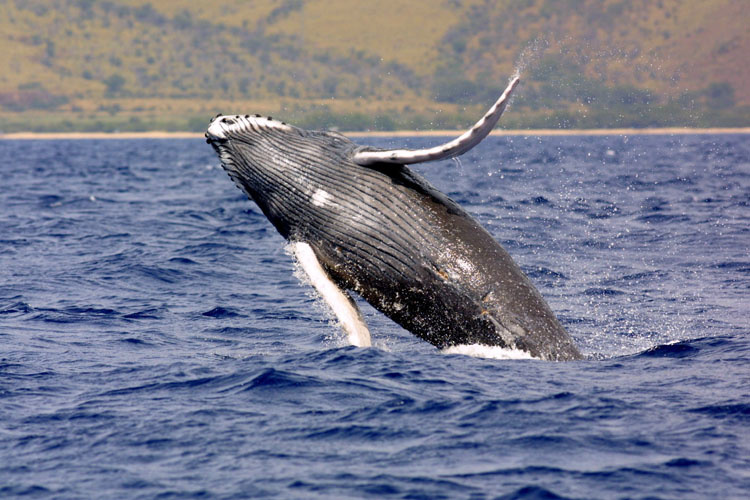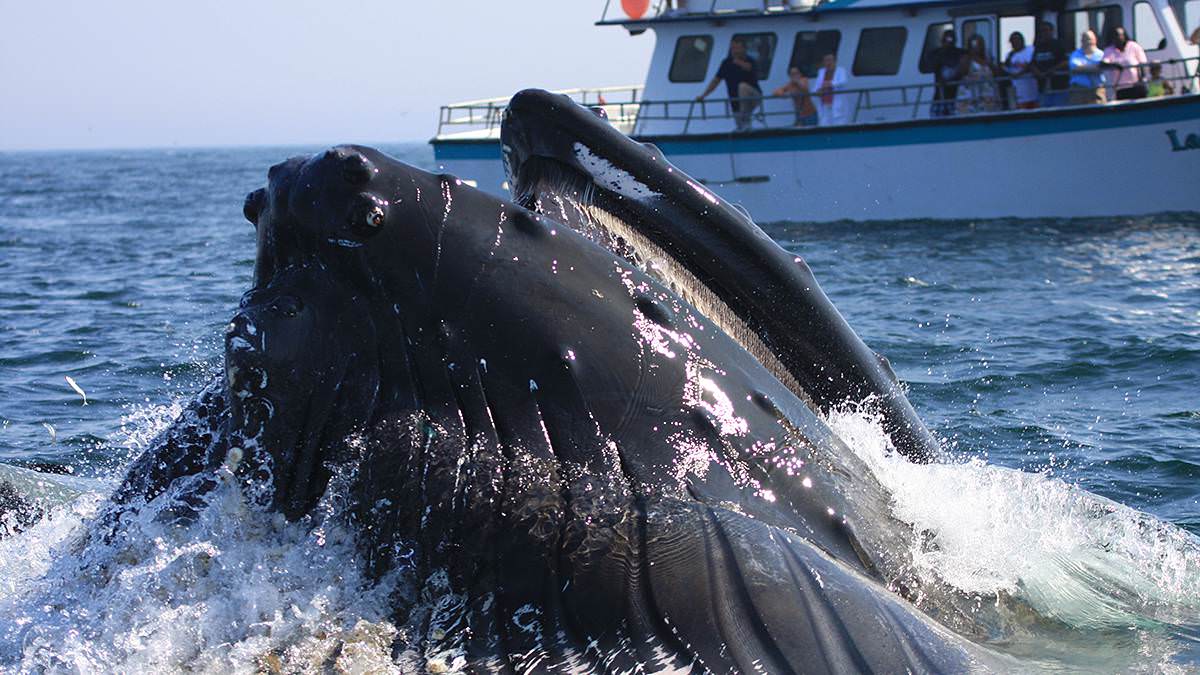
Celebrating 26 Years Of Whale Protection And Research At Stellwagen Bank and Hawaiian Humpback National Marine Sanctuaries
Stellwagen Bank National Marine Sanctuary and the Hawaiian Humpback National Marine Sanctuary are two truly special places on our planet. These two places are extremely unique but share one specific commonality. Both were appointed by Congress on November 4, 1992. They recently celebrated their anniversaries as protected areas that provide a safe habitat for a diverse number of incredible species. To celebrate a quarter of a century of protection, research, and ocean stewardship we want to highlight just a few of the ways these two places have impacted our oceans.
Stellwagen Bank National Marine Sanctuary
Stellwagen Bank National Marine Sanctuary is situated at the mouth of the Massachusetts Bay and regarded as one of the best places to whale watch in the world. In fact, USA Today voted it the “Best Place to See Aquatic Life” back in 2016!
Each summer, humpback whales, right whales, and dolphins return to feed and nurse their young. The sanctuary also provides a stopover for several species of migrating birds. SCUBA divers and wildlife enthusiasts come from all over the world to observe marine life, including schools of fish, sponges, snails, eel, and sharks. Locals even know some of the whales by name. The sanctuary features a group of 50 humpback whales that dependably return each season and the sanctuary has documented their histories, behaviors, and interactions.
Research
It is also an important site for research. Recent projects have looked at Baleen whale ship strikes, the impact of vessel speeds on habitats, whale entanglement, noise and acoustics, the impact of commercial fisheries, and seabird migration. Risk analysis and rerouting of commercial vessels during critical feeding seasons have had a significant impact of reducing ship strikes. Studying traffic patterns over a 24-year period, along with a combination of acoustic mapping of hot spots and migratory patterns, has led to reductions in vessel strikes to the endangered right whales by 58% and baleen whales by 81%.
Economic Impact
Stellwagen Bank is an important commercial and recreational destination, which generates significant revenue for the local economy.
Operating under regulations established by the National Oceanic and Atmospheric Administration (NOAA), more than 300 commercial fishing boats generate between $15 and $23 million in revenue annually. It is also part of one of the oldest commercial fisheries in America. On the tourism side, whale watching generates $24 million per year for the local economy. It is also one of the most popular recreational fishing spots in the northeast and a favorite for divers worldwide.

Hawaiian Humpback National Marine Sanctuary
Hawaiian Humpback National Marine Sanctuary was the 12th area to receive the marine sanctuary designation in the U.S. Encompassing approximately 1,218 square nautical miles, it surrounds the main Hawaiian islands, including areas around the islands of Maui, Lanaʻi, and Molokaʻi, and parts of Oʻahu, Kauaʻi, and Hawaiʻi.
Each winter, humpback whales visit the sanctuaries Hawaiian waters to give birth in warm waters, with peak viewing seasons from January to March. Hawaiian Humpback National Marine Sanctuary is also home to monk seals, spinner dolphins, sea turtles, and 16 additional species of marine mammals.
The sanctuary was established to protect the humpback whale and its habitat. Through regulations, marine stewardship, and protection, the population is increasing but still considered endangered.
Research
Whale watchers and scientists alike have studies humpback whale habitats for decades. Volunteers help with the annual Sanctuary Ocean Count each year in January, February, and March. Research efforts have focused on issues as diverse as population, human impact, vessel strikes, boat noise, vocalization, song and sounds, habitat mapping, and historical photo documentation. In addition, researchers continue to monitor and study other species like green sea turtles, seabirds, coral reefs, Hawaiian monk seals, lobsters, invasive species, and marine debris.
Economic Impact
The Hawaiian Humpback National Marine Sanctuary also plays an important role in Hawaii’s economy. Whale watching tours bring in $74 million a year while commercial tour boat and charter fishing boats account for more than 2,000 jobs and are responsible for another $350 million.
Two Sanctuaries, One Goal
Hawaiian Humpback National Marine Sanctuary and Stellwagen Bank National Marine Sanctuary play important roles in research, tourism, economic development, and protection of these vital environmental resources. They prove that while they are different in many ways, they are similar in the elements that matter the most; protecting the waters and the animals in them. Whales are a critical species in both of these locations so it makes sense that they are a large focus for each. While both sanctuaries have worked to improve conditions for whales and other marine life over the last 25 years, there is still more that needs to be done. So as we celebrate the anniversary of these two incredible locations, we must also look at what the next 25 years bring.
